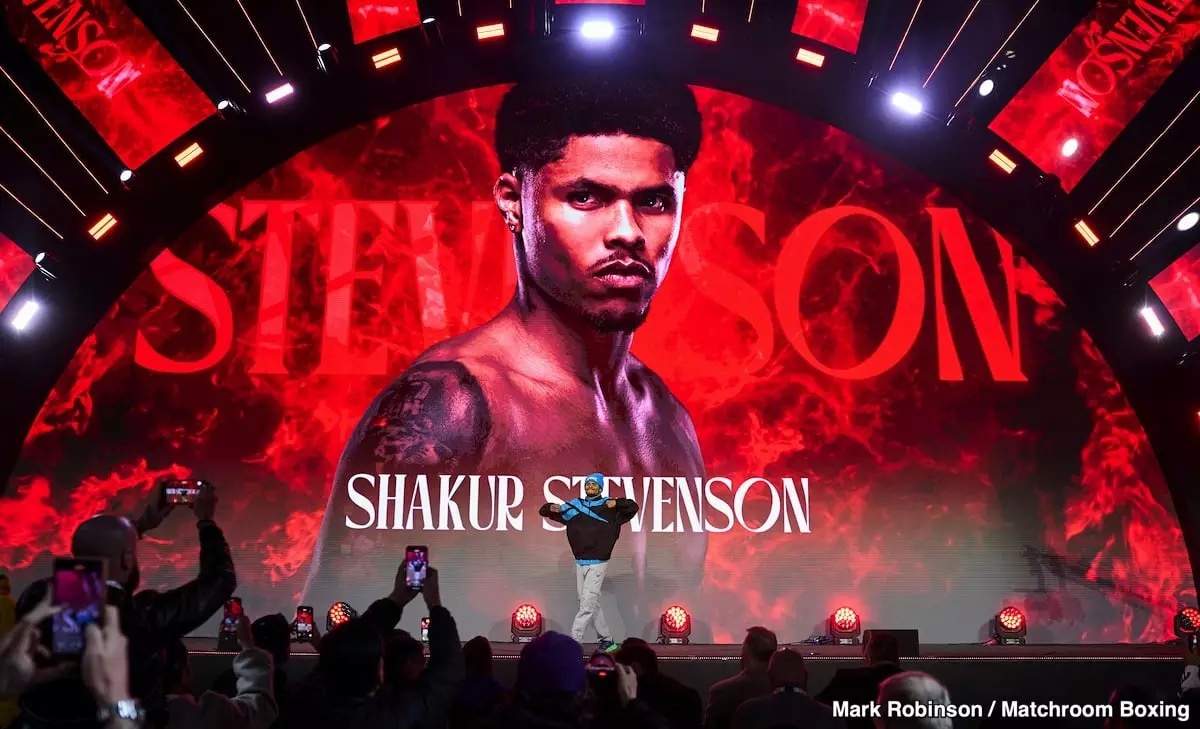Boxing, a sport steeped in tradition and drama, often serves as a crucible for ambition, talent, and heart. Among those aspiring to ascend to the pinnacle of the lightweight division is Shakur Stevenson, a young pugilist whose potential is marred by a lingering sense of disappointment. At the core of his bitterness is a figure he once idolized: Vasily Lomachenko. The inability of these two boxing titans to square off has led Stevenson to feel that he has been unjustly sidelined, creating a narrative of unfulfilled promise in the realm of professional boxing.
Stevenson’s ascent to the lightweight division began two years ago, yet it has been fraught with obstacles, not least of which is Lomachenko’s unexpected unwillingness to engage. Stevenson has openly expressed his frustration, labeling Lomachenko as an evasive opponent—a ‘duck’ in boxing terminology. This term encapsulates the notion that a fighter deliberately avoids facing a seemingly challenging opponent. For Stevenson, who looked up to Lomachenko as a paragon of skill and achievement, this snub feels painfully personal.
Popularity Over Potential: The Harsh Realities
One could argue that Lomachenko’s reluctance to battle Stevenson is rooted in the financial and promotional dynamics that govern boxing. Despite his talent, Stevenson has yet to capture the kind of widespread popularity necessary to draw established champions like Lomachenko into the ring. Even during his last bout against Josh Padley, Stevenson found himself in a fight that was relegated to the undercard—a telling sign that the boxing world still views him as an up-and-comer rather than a mainstream star.
However, this begs the question: Should a fighter’s worthiness for a match solely depend on popularity? In a sport built on the prowess of its athletes, such a mindset feels fundamentally flawed. The essence of boxing should revolve around skill, potential, and the raw ability to deliver a compelling fight, rather than the fame that accompanies it.
The Age Factor: A Double-Edged Sword
As Lomachenko ages, his skills have undoubtedly diminished. The 37-year-old fighter has faced setbacks due to injuries and a more sporadic fight schedule. However, those who follow the sport are acutely aware that Lomachenko remains a formidable opponent with remarkable offensive and defensive capabilities. Despite his recent struggles, many analysts believe he would emerge victorious against Stevenson. That underscores a critical truth: boxing is as much about timing as it is about talent.
Stevenson appears to possess defensive prowess that often outshines his offensive capabilities, but this may expose a significant gap when matched against Lomachenko’s experience. The nuanced strategies and techniques that Lomachenko brings to the ring have been developed over years of high-stakes combat. With this backdrop, any fight between the two would not only gauge the evolution of Stevenson’s craft but would further illuminate whether he can transition from being a promising contender to a legitimate threat.
Reverence and Rivalry: A Torn Relationship
Stevenson’s conflicted admiration for Lomachenko adds another layer to this narrative. While he once idolized the Ukrainian champion, the latter’s perceived ducking of a fight has altered Stevenson’s perspective. As he states, this disappointment casts a different light on Lomachenko’s celebrated career. The emotional weight of idolization turning into rivalry can warp the way aspiring boxers, like Stevenson, acknowledge their heroes.
Shakur’s statements reflect the internal struggle many athletes face when their ambitions clash with the reality of the sport. He acknowledges the intricacies of pursuing a fight against Tank Davis, knowing that stars have their own timelines. In stark contrast, his feelings toward Lomachenko indicate an emotional investment that transcends mere professional rivalry, intertwining admiration and resentment in a complex tapestry of unmet expectations.
Through the lens of Stevenson’s journey, one sees a microcosm of the broader boxing environment—a venue where dreams are both forged and shattered in the ring. For a boxer of his caliber, there lies an unyielding hope that he will one day transcend disappointment and fulfill his heavyweight aspirations, but the path remains perilously unclear against the backdrop of a sport dictated by fame, timing, and personal choice.


Leave a Reply